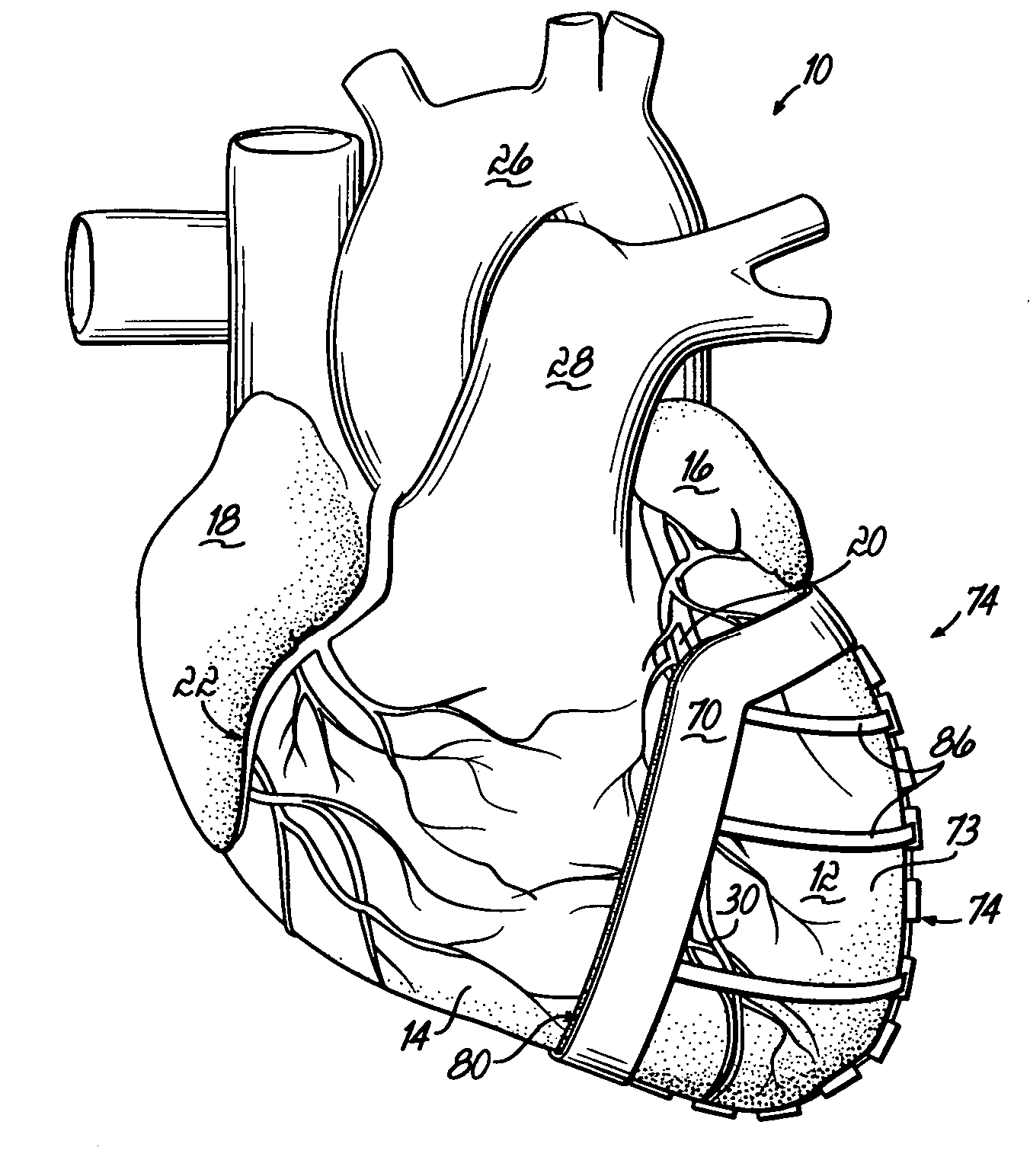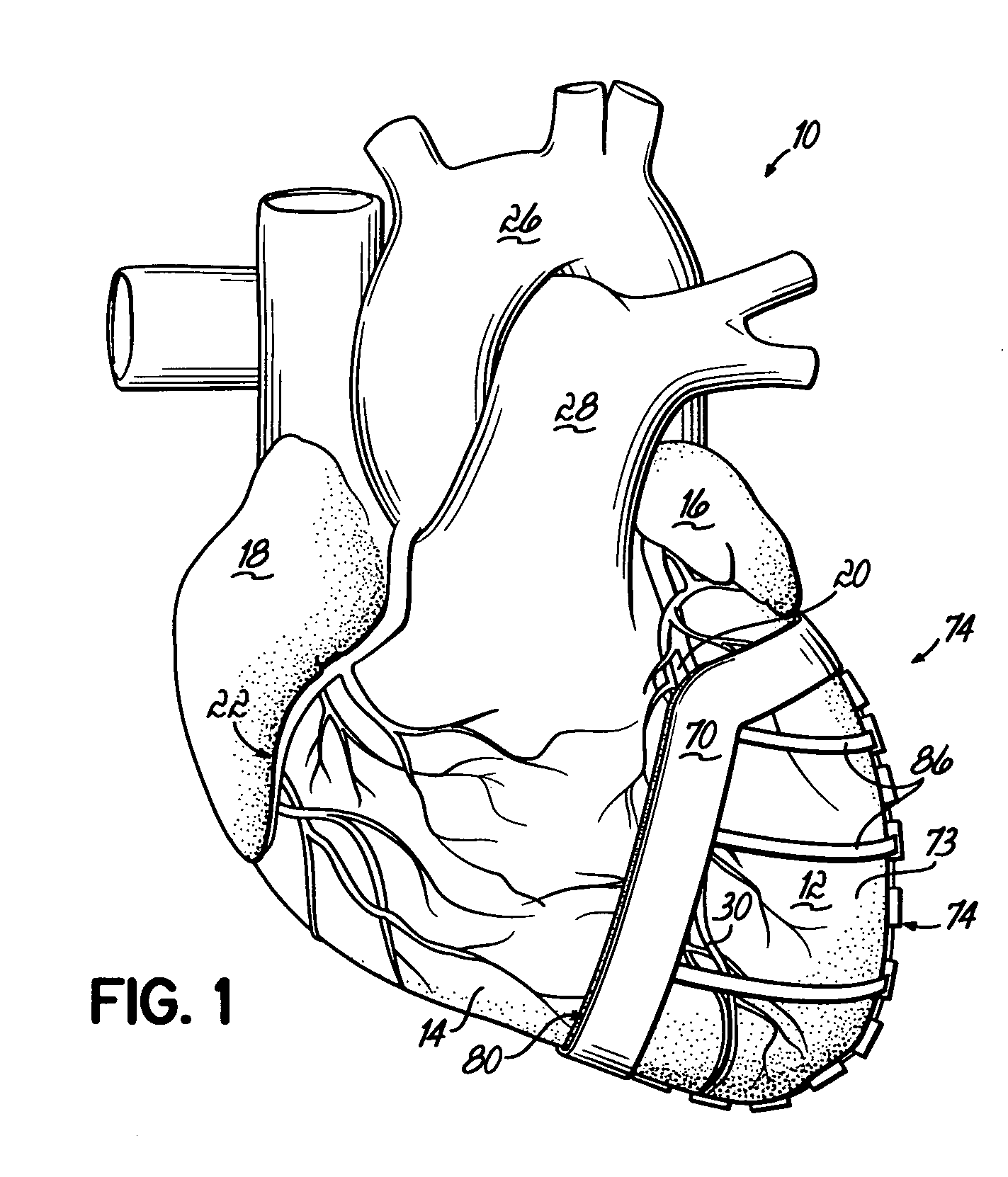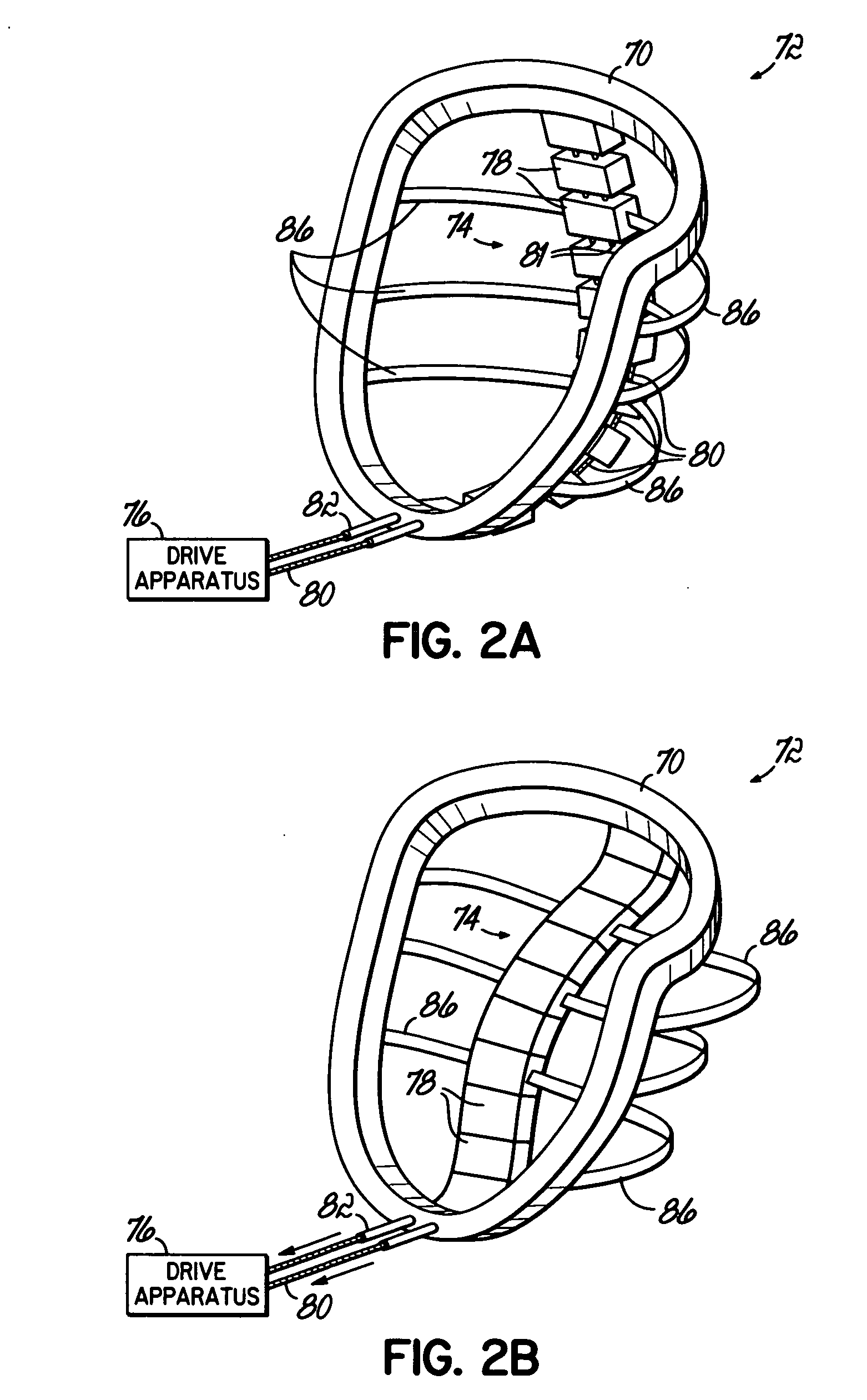A physical ailment or condition which compromises the normal and healthy operation of the heart can therefore be particularly critical and may result in a condition which must be medically remedied.
More specifically, the natural heart, or rather the cardiac tissue of the heart, can degrade for various reasons to a point where the heart can no longer provide sufficient circulation of blood for maintaining the health of a patient at a desirable level.
In fact, the heart may degrade to the point of failure and thereby may not even be able to sustain life.
In using artificial hearts and / or assist devices, a particular problem stems from the fact that the materials used for the interior lining of the chambers of an
artificial heart are in direct contact with the circulating blood.
Such contact may enhance undesirable clotting of the blood, may cause a build-up of
calcium, or may otherwise inhibit the blood's normal function.
As a result, thromboembolism and
hemolysis may occur.
Moreover, these devices must be powered by a power source, which may be cumbersome and / or external to the body.
Such drawbacks have limited the use of
artificial heart and assist devices to applications having too brief of a time period to provide a real lasting health benefit to the patient.
Before replacing an existing organ with another, the substitute organ must be “matched” to the recipient, which can be, at best, difficult,
time consuming, and expensive to accomplish.
Furthermore, even if the transplanted organ matches the recipient, a risk exists that the recipient's body will still reject the transplanted organ and
attack it as a
foreign object.
As currently used,
skeletal muscle cannot alone typically provide sufficient and sustained pumping power for maintaining circulation of blood through the
circulatory system of the body.
Typically, bypass systems of this type are complex and large, and, as such, are limited to short term use, such as in an operating room during
surgery, or when maintaining the circulation of a patient while awaiting
receipt of a transplant heart.
The size and complexity effectively prohibit use of bypass systems as a long-term solution, as they are rarely portable devices.
Furthermore, long-term use of a heart-
lung machine can damage the blood cells and blood borne products, resulting in
post surgical complications such as bleeding, thromboembolism function, and
increased risk of infection.
Although somewhat effective as a short-term treatment, the existing pumping devices have not been suitable for long-term use.
This “active filling” of the chambers with blood limits the ability of the pumping device to respond to the need for adjustments in the
blood volume pumped through the natural heart, and can adversely affect the circulation of blood to the
coronary arteries.
Furthermore, natural heart valves, between the chambers of the heart and leaching into and out of the heart, are quite sensitive to wall
distortion and annular
distortion.
The compressive movement patterns that reduce a chamber's volume and distort the
heart walls may not necessarily facilitate valve closure (which can lead to valve leakage).
Another major obstacle with long term use of such pumping devices is the deleterious effect of forceful contact of different parts of the living internal heart surface (
endocardium), one against another, due to lack of precise control of wall actuation.
However, it can compromise the integrity of the living
endothelium.
More specifically, the
heart walls may have a tendency to become overly distended, or take on sharp curvatures, in certain areas based upon the indentation of those walls in other areas.
Such unnatural shaping of the heart tissue may be damaging to the tissue.
Therefore, when utilizing a heart wall actuation
system, one issue to be addressed is the shape of the walls when the
system is actuated, and the variance of that shape from the natural shape that the heart would assume when pumping normally.
 Login to View More
Login to View More  Login to View More
Login to View More 


